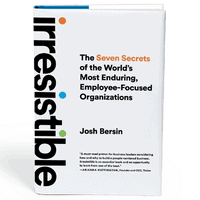Demystifying The Learning Technology Market
One of the most exciting parts of business is corporate learning. This is a $360 billion market and it defines success or underperformance for virtually every company. Every time you hire someone, launch a new product, or change the way your company works there’s a massive training need to fill. And with SkillsTech and a vast new marketplace of Creator content, this is one of the most innovative technology markets in the world.
 Many call this space “edTech,” but it’s really much more. The traditional edTech market conjurs up programs like Moocs (Coursera), online degrees (SNHU, Capella, Strayer), or platforms like Khan’s Academy. Well these are just scratching the surface. Inside the halls of innovative corporations we now find incredibly powerful solutions which use VR, AR, AI-enabled learning paths, and highly intelligent career pathways.
Many call this space “edTech,” but it’s really much more. The traditional edTech market conjurs up programs like Moocs (Coursera), online degrees (SNHU, Capella, Strayer), or platforms like Khan’s Academy. Well these are just scratching the surface. Inside the halls of innovative corporations we now find incredibly powerful solutions which use VR, AR, AI-enabled learning paths, and highly intelligent career pathways.
All this is possible because of the huge number of technology innovators in the space. In fact I’ve always observed that as soon as a new technology is invented, the very first use-case is often learning. (One may argue that sex and dating may come first, but learning quickly comes next.) Witness how many educational YouTube videos you find.
When the personal computer was invented (1981) the very first application we had at IBM was the “laserdisc.” And the tech-fueled learning market has never slowed down.
One of the reasons “Learning Tech” is so hot is that we now have APIs and industry standards to help. A decade ago the only way to measure or track online learning was through SCORM, an old standard built around CD-ROM tracking initially developed for aviation training. Today the X-API lets us track and measure every single interaction a user has with content, very similar to the way advertising tech works. This means HR and L&D leaders can get infinitely creative and still measure and iterate to understand what works.
And there are many other innovations going on.
First is the explosion of growth in what we now call “cohort-based learning.” As you remember from school, people tend to learn in small groups. That’s why we always had our desks pulled together in grade school to work on various projects. Well this idea is sweeping across corporate training with all sorts of ways you can “learn from your peers” in exercises or courses. (Our entire Josh Bersin Academy is a cohort-based learning platform.)
Second is the emergence of video. Once considered a way to “capture an expert” like TedTalks, it is now a way to “micro-capture” moments, ideas, and concepts in a highly memorable way. In fact, TedTalks are dropping in popularity because they’re too long! TikTok, one of my very favorite apps, is a perfect example. TikTok is essentially a very crafty micro-learning app and I challenge L&D leaders to build the world’s best training in TikTok. If you have some good ones send them to me and I”ll promote them.
(TikTok is trying to build this out, by the way, promoting the hashtag #LearnonTikTok. Right now its filled with noise, but I’m now finding cooking tips, Yoga classes, and some pretty interesting videos on how AI really works. This is new for them, but just wait.)
Third is the growth of AI. Of all the applications I’ve seen of AI in HR, learning is probably the hottest. Platforms like EdCast, Degreed, Eightfold, and many others can guess at your skills, watch your activity online, and recommend content in the flow of work. I first wrote about this in 2016: it is a reality today. And now that Microsoft, LinkedIn, Cornerstone, and other big companies are investing in this space, it’s only going to get better. And the new space I call SkillsTech is sweeping across business. (AI-enabled coaching is another tributary of this space.)
Fourth is the emergence of gaming. We built gamified learning at DigitalThink back in 1999 and 2000, but now it’s even better. Vendors like NIIT, Allen Communications, and many other content providers build courses with challenges, points, leader boards, and all the artifacts you find in Starcraft or Game of Thrones. Now that VR is coming, it’s just going to get better.
Fifth, of course, is VR. I’ve been a fan of companies like STRIVR, Mursion, and fast-growing companies like Talespin, Immerse, Attensi, and Virbela for years. Microsoft, Accenture, and soon other big companies are investing in this, and I expect it to revolutionize training in short order. You should absolutely be looking at these vendors: their training solutions deliver experiences you simply will not forget.
(The Metaverse is alive and well in the corporate learning space: mark my words, it is going to transform how we learn.)
What Is The Metaverse? Facebook’s Strategy And How Microsoft, Disney, and Amazon Could Win.
Sixth is perhaps the biggest of all: the emergence of what I call The Creator Market for Corporate Learning. Just like the entire media landscape is built around the Creator Economy (YouTube, Instagram, Tiktok), the same thing is happening in training. Not only are companies like Udemy (expert-authored courses) growing at 2-3 times the rate of traditional publishes, you have a Creator Economy inside your company. If you use tools like 360 Learning, Articulate, and many others and simply encourage your employees to share what they know, well the sky is the limit.
And there’s much more.
This week we just published a very exciting research study that explains this market and lists more than 40 of the top providers, along with a strategy guide to help you get started. This will be available for free for 60 days, so I encourage you to read it now. And call us if you’d like help with your Learning Tech strategy.
Additional Resources
Understanding SkillsTech, One Of The Biggest Markets In Business
The Global HR Capability Project
Building A Corporate Skills Strategy: It’s Harder (and more important) Than It Looks


